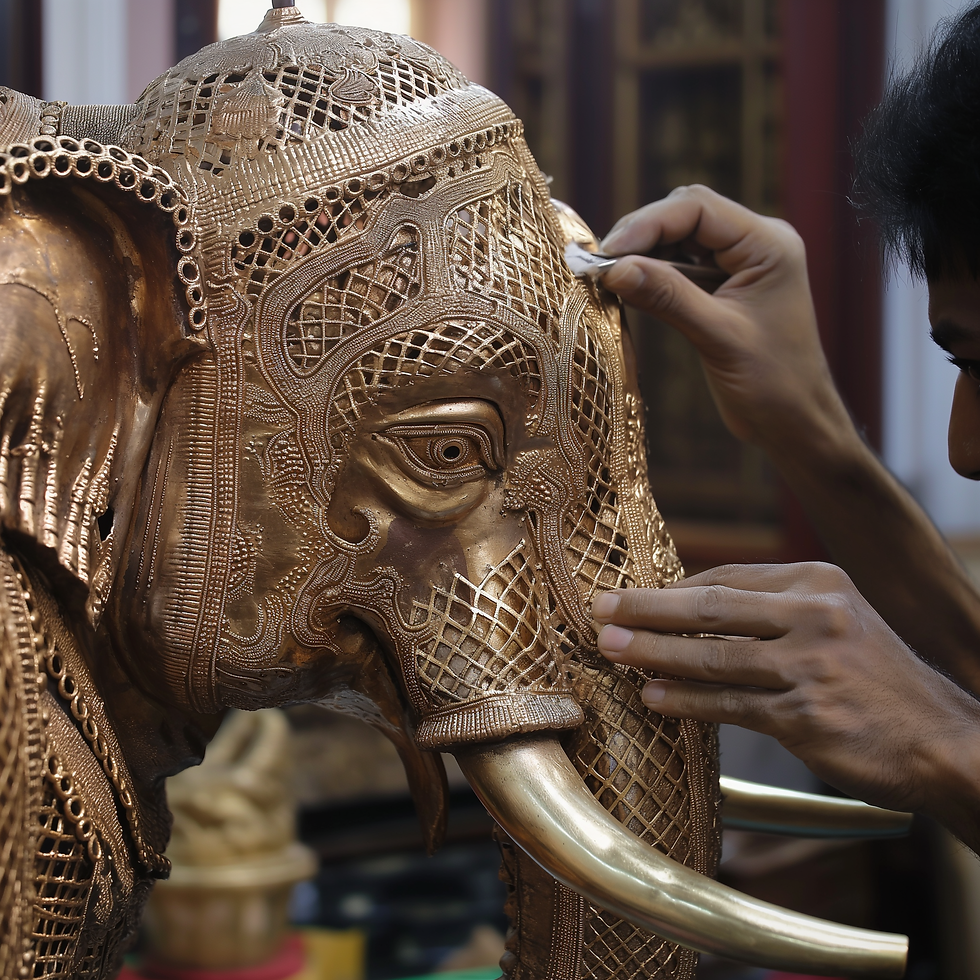
The Alchemy Chronicles
The Weight of the Hand, The Echo of the Hammer
Craftsmanship is not simply a skill—it is a language, a devotion, a mark of time itself.


The lost-wax technique perfected by the Cholas is still alive today, sculpting new forms. The rhythmic hammering of brass in the Thathera tradition still creates patterns only the hand can master. The delicate setting of stones, once reserved for temple jewels, now finds new meaning in Kāli’s creations.
This is what it means to be part of a lineage that has never broken.
The past is not something we look back at. It is something we carry forward.
"Kāli is not just creating products; we are curating culture. Our mission is to ensure that the mastery of an artisan in a remote village finds its way into the life of a modern patron of luxury."

The Dawn of Metalwork
The Birth of Metallurgy & Lost-Wax Casting

2500 BCE – 1500 BCE Indus Valley Civilization & Early Vedic Period
Dhokra (Lost-Wax Casting) – Indus Valley Civilization (2500–1500 BCE)
The Dancing Girl of Mohenjo-Daro, a 4000-year-old bronze figurine, is the earliest known evidence of lost-wax metal casting in India. Excavations at Harappa and Mohenjo-Daro reveal copper and bronze tools, ornaments, and idols,
showing an early mastery of metallurgy. The cire perdue (lost-wax) process—still used by Dhokra Damar tribes in Chhattisgarh, Bengal, and Odisha. Early castings included ritual objects, hunting figurines, and measuring bowls.


The lost-wax technique perfected by the Cholas is still alive today, sculpting new forms. The rhythmic hammering of brass in the Thathera tradition still creates patterns only the hand can master. The delicate setting of stones, once reserved for temple jewels, now finds new meaning in Kāli’s creations.
This is what it means to be part of a lineage that has never broken.
The past is not something we look back at. It is something we carry forward.
"Kāli is not just creating products; we are curating culture. Our mission is to ensure that the mastery of an artisan in a remote village finds its way into the life of a modern patron of luxury."















.jpg)







